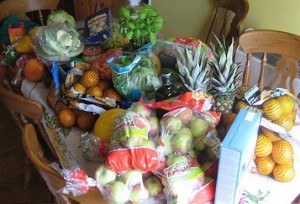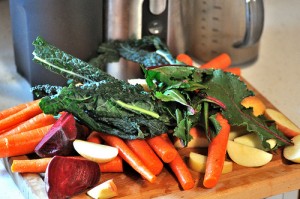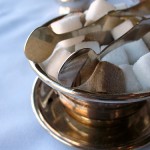by Michelle Sutton-Kerchner
Cleanse or detox diets are the latest trend. Eliminating toxins and waste from the body sounds like a great solution to sluggish energy and excess weight. But, how effective are they …
Traditionally, detoxification (detox, for short) was meant for those suffering substance addictions. To overcome physical and emotional dependence on alcohol and other drugs, a detox program is often necessary. Recently, detoxification has evolved into a holistic method for removing environmental, dietary, and medicinal toxins from the body. Detox or cleanse therapy is a thriving element of alternative medicine that includes special diets, herbs, and supplements.
The Detox Diet
“Do you juice?” is a question resonating among holistic healers, health foodies, and celebrities looking for glam diets. Juicing is just one of several diet types used during a cleanse. During a detox, blenders tend to get a good workout (sometimes at the expense of a body weakened by lack of nutrients). The detox dieter may toss kale, carrots, pineapples, and strawberries– all at once– into the blender with myriad other raw produce. This may be consumed in place of a traditional meal.

Although these diets vary in specifics, they typically involve two to four weeks of restrictions. Some may attempt an intense weekend detox. (This approach might have been created for those who perish the thought of eliminating ice cream or pizza for any longer.) Main nutrients are obtained through raw vegetables and fruit, and juices created from them. This diet is often supplemented with herbs, vitamins, and colon cleansers (including enemas) to purge the system.
Detox diets focus on foods that promote the body’s natural ability to eliminate waste. Leafy, dark greens are essential. The consumption of foods that contain potentially harmful substances, often found in processed foods, are eliminated. There may be a period of fasting. Meals are minimized; solid foods are sometimes replaced with juiced forms.
Severe detox, such as the Master Cleanse, involves drinking only lemonade, grade B maple syrup, and cayenne pepper. Other detox diets eliminate specifics in an attempt to discover food allergies and sensitivity.
Is It for You?
The true purpose of detox diets is to promote self-healing. Celebrities popularized cleansing diets as a fast weight loss method. However, venturing into a detox with weight loss goals can be dangerous and defeat any associated health benefits. The goal should be to eliminate unhealthy substances introduced by contaminates like pesticides, pollution, processed foods, medication, and caffeine.
Some believe the modern world causes the liver to be overstressed. A detox diet is thought to help remove everyday toxins for better functioning. Post-cleanse, individuals report increased energy and concentration. There is no scientific basis for this outcome. The positive results may be owed to a placebo effect. The dieter believes s/he has accomplished something healthy and, therefore, feels healthier. Most ingested toxins are successfully removed by the kidneys and liver, and excreted from the body. And, sure, that spinach smoothie helped things along.
During a detox diet, one may experience side-effects, commonly dehydration, fatigue, dizziness, and nausea. Those with health conditions should avoid cleansing diets. They are not intended to cure illness or disease, but rather to clear obstacles to better health. Pregnant and nursing women should avoid any form of detox dieting. And, do not allow your grandmother or teen to start taking their meals in the form of juice or herbal supplements. Guide them to other methods for losing a few pounds or obtaining a youthful glow.
 Some Eastern cultures practice a similar way of eating based on one’s Ayurvedic type. (Ayurvedic is an alternative medical system believed to have originated in India over 5,000 years ago.) Once your type is determined, a diet to support it is created from a specific list of foods.
Some Eastern cultures practice a similar way of eating based on one’s Ayurvedic type. (Ayurvedic is an alternative medical system believed to have originated in India over 5,000 years ago.) Once your type is determined, a diet to support it is created from a specific list of foods.
Not all of the Ayurvedic foods are permitted in a detox diet. This is simply an alternative approach to cleansing the system and eating according to needs. The Ayurvedic approach is aimed at restoring balance through dietary improvements, meditation, massage, purifying techniques, breathing exercises, herbal remedies, baths, and exercise. Encompassing these additional elements provides a complete lifestyle approach, which we all know is essential for maintaining benefits.
According to Dawn Jackson Blatner, a spokesperson from the American Dietetic Association, “Our bodies have organs such as the liver, kidneys, skin, lungs, and digestive system to remove unnecessary substances every day without the help of any special detox diet or potions to help it along.” If a taxed liver is your concern, consider a routine blood test to check for elevated liver enzymes. An elevation can be caused by excessive alcohol, medications, or obesity.
Following the proven philosophy of “all things in moderation,” one must wonder if a detox diet is the appropriate path to wellness. These extreme cleanses performed long-term can lead to deficiencies in vitamins and minerals. It can also cause the dreaded muscle atrophy through breakdown.
Creative Cleansing
To detox or not to detox. It’s a personal decision to be made and followed. Regardless of your decision, stick to it. Do not allow a failed detox to discourage you from the big picture of a healthy, fit life. If you fear becoming overwhelmed by the extremeness of it, consider creating your own detox plan, one that is more whole-some.
Retrain your taste buds: Slowly decrease the amount of salt and sugar in your diet. If you’re a three-sugar-spoon tea drinker, gradually decrease. With each cup, you’ll be one sip closer to consuming less sugar, without your palate realizing it. Follow this example with the salt shaker, the caffeine intake, and all aspects of your diet.

Rather than completely eliminating boxed or processed food products, realistically reduce the role they play on your plate. Make it a goal to eat “closer to the earth.” Given the choice of boxed potatoes or baked, recognize the benefits– and convenience– of tossing potatoes in the microwave and eating fresh. Take advantage of such simple alternatives. When less convenient ones surface, you can allow a boxed cake mix over making one homemade.
If your palate is accustomed to pre-packaged foods, fast fare, and restaurant dining, a gradual approach assures success. Otherwise, you may find food lacking without added sweeteners, sodium, and preservatives. The drastic difference in flavor could return you to less healthy choices.
Sweet tooth? Satisfy it with the natural sugars found in fruit. Use cinnamon to bring out sweetness or enhance coffees, teas, yogurt, oatmeal, and baked goods. It will provide a new zing, along with its own health perks.
Partially eliminate: Modified fasts are part of some traditional cultures. If you feel such a period may be beneficial, consider challenging yourself with partial eliminations. To fast during a busy lifestyle would likely yield an unproductive day at best, or possible accidents from fainting and dizziness at worst.
Try eliminating dairy from your diet for two weeks. Note how you feel, how your body reacts, and any positive/negative side-effects. Perhaps the inflammation you’ve been experiencing in your joints, or that nagging headache, will be eliminated as well. Dairy is often associated with inflammation. Therefore, it might be helpful to reduce or remove it from your diet while trying to heal. Such choices directly impact outcome without the need for total dietary upheaval.
If you feel fatigued or sluggish, eliminate sweets for a few weeks. Don’t forget to avoid foods that metabolize as sugar, such as plain pasta, white breads, and alcohol. Challenge yourself to a game-day or weekend without the six-pack. These indulgences can be replaced with the new luxury of physical and mental energy (and regularity). Instead, have a drink to accompany your Saturday night meal or at a happy hour. As for cigarettes, do whatever is necessary to give them up.
The main goal is to reduce the unhealthy and increase that which helps us grow. When eliminating, try new things. Turn the focus from deprived to experimental. Through this process, you are more likely to discover the joy of soy nuts or marinated kale. There won’t be chips-and-dip competition.
Prior to any restrictive diet, consult with your physician to determine your unique requirements. As with anything in life, what you put in the body is what you’ll get out of it. Be sure to maintain proper nutrition for best performance.

Exercise: Nothing complements dietary success like a commitment to fitness. Whether striving to lose weight, increase energy, or rid the body of stress, waste, and toxins, a good sweat session is a healthy diet’s lifelong mate.
The best diet enhances your time on the Exercise Floor. It includes all groups from the Food Plate– fruits, vegetables, whole grains, and lean-protein sources. Protein fuels a workout and nourishes the body, particularly muscles. If you are performing a detox diet, speak with a personal trainer or fitness instructor on the appropriate intensity for your workout. Consult with a Center nutritionist for tips, recipes, and precautions to take when exercising during a cleanse.
For your workout, follow the same advice used in the kitchen. Go gradual, if you’re a fitness newbie. Keep it fresh, if you’re an exercise veteran.
Replace extremes with modifications to accommodate your day. Days become a lifestyle, and a healthy one is truly pure.
Schedule your Nutrition Counseling appointments!
Fill out this form to request a consultation on how Nutrition Counseling can benefit you!
Sources
“11 Healthy Ways to Detox,” by Amy Ahlberg at www.fitnessmagazine.com.
“The Detox Diet,” by Cathy Wong at www.about.com.
“Detox Diets: Do They Work?” by Katherine Zeratsky at www.mayoclinic.com.
“What Is a Detox Diet, and Who Needs It?” by Jocelyn Voo at www.fitnessmagazine.com.
Image Credits
Drink up (introductory photo): http://www.flickr.com/photos/dnevill/4335050984/
Raw veggies: http://www.flickr.com/photos/merydith/5647928074/
Detox food table: http://www.flickr.com/photos/thesuperalice/2859576322/
Sugar bowl: http://www.flickr.com/photos/sfllaw/1313975287/
 Fitness & Wellness News Your Source for Fitness News, Wellness News, Health News, and Nutrition News!
Fitness & Wellness News Your Source for Fitness News, Wellness News, Health News, and Nutrition News!



